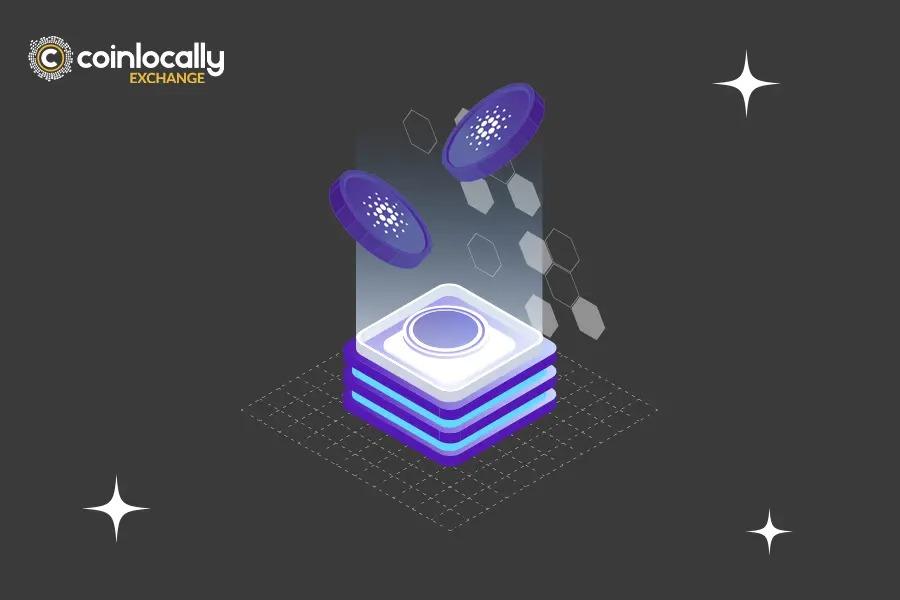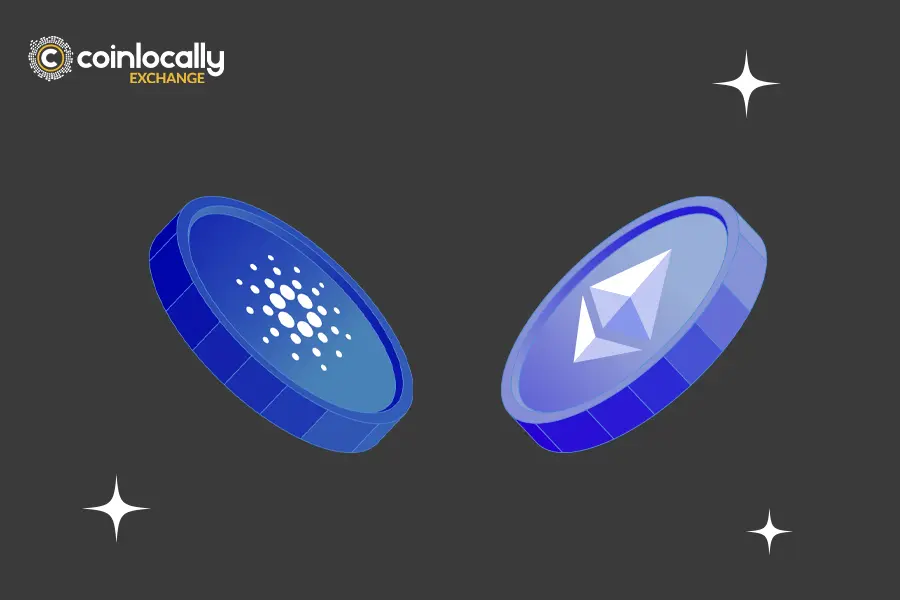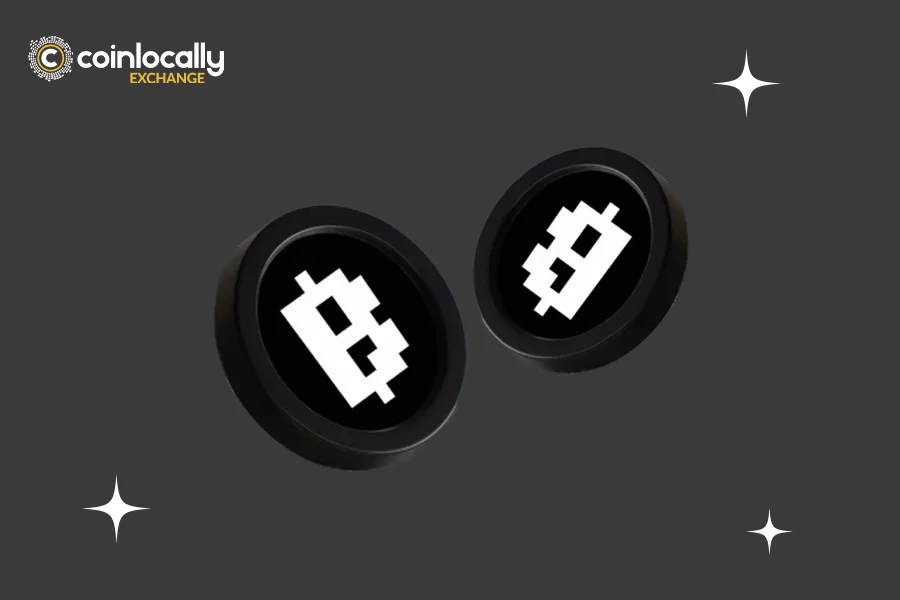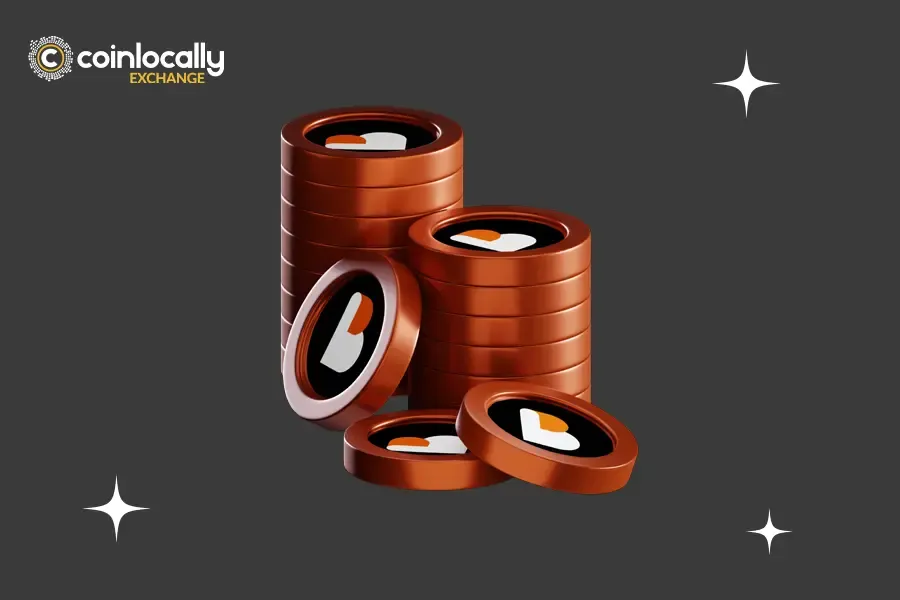Cardano, AKA Ethereum-Killer, is a Proof-of-Stake blockchain best known for its staking opportunities. Stake Cardano easily anytime, with low lockup periods and high APYs – it’s like any staker’s dream. Keep reading to find the best place to stake Cardano and dive into staking rewards!
Table of Contents
What Is Cardano (ADA)?
Cardano is a decentralized, Proof-of-Stake (PoS) crypto and blockchain platform. Founded by Ethereum’s co-founder Chris Hoskinson, Cardano aims to solve the three main issues faced by blockchain projects:
- Sustainability,
- Interoperability,
- and Scalability.
Let’s elaborate on how Cardano has addressed each of these issues.
Scalability
According to Hoskinson, more users mean slower processes, but a platform needs to speed up as more users start to use it.
If a network is to host huge traffic, it needs to scale up to maintain a consistent performance rate. This means that a blockchain’s capability needs to scale up along with its usage.
Cardano aims to solve this issue using Epochs, which consist of a mechanism that divides up the validator nodes in the blockchain. Epochs are the key to making Cardano a scalable blockchain.
Learn More: Cardano vs. Ethereum: Which Is a Better Long-Term Investment?
Interoperability
Blockchain applications can directly communicate and connect to one another only when they are on the same blockchain. For example, an Ethereum blockchain app cannot communicate directly with a Ton blockchain app.
This issue of interoperability is frequently seen in major blockchains, and Cardano aims to solve it through its bridges.
Sustainability
If any crypto project aims to fit into people’s everyday financial lives, it would need its system to be sustainable.
Cardano maintains economic sustainability by having a treasury to collect fees. These fees are used to pay Cardano contributors and developers and incentivize them to keep improving Cardano’s ecosystem.
Cardano is also environmentally sustainable because it implements the Proof-of-Stake consensus mechanism and can give users high rewards for stakes in ADA.
Let’s find out what staking is all about and how it can help you earn passive income.
Learn More: What is Crypto Liquid Staking? Which Coin Has The Highest Reward?
How Do Proof of Stake and Staking Work?
Proof-of-stake (PoS) blockchains allow users to contribute to the network by validating transactions and becoming validators. In return, they are rewarded with the platform’s native cryptocurrency.
Users can do so by staking their assets into the blockchain, which involves locking their crypto in the platform for a predetermined period.
By staking your assets, you contribute to the blockchain by validating transactions and “proofing” them.
In the traditional Proof-of-Work (PoW) model, users proved their contribution by mining the blocks using computing power.
In the Proof-of-Stake model, users can prove their contribution by locking up their assets in the blockchain. This process of proofing and validating blocks is called a hash function, and in the context of the Proof-of-Stake mechanism, it is referred to as staking.
Since the Proof-of-Stake model was introduced to address the power consumption issues of the Proof-of-Work model, it’s necessary to look at these two mechanisms side-by-side to truly grasp what PoS is all about.
Proof of Work Vs. Proof of Stake In A Nutshell
In the PoW consensus mechanism, transaction validators compete against one another to be the first to solve a block and earn the mining rewards.
This process is similar to a race; as each block is solved and a miner earns rewards, the energy of other competitors goes to waste.
This is the issue the PoS mechanism aims to solve, and here is how it does so.
Learn More: What Are The Different Types of Staking? Which One Is The Best?
What Are Staking Nodes?
In PoS blockchains, the network chooses one node or group of nodes at a time to solve the block and rewards them. This process is called node selection, and the node is selected based on how many coins it has locked up or “staked”.
The more a node stakes, the higher its chances of being selected and earning the staking rewards. Now that we have learned the basics of staking let’s learn how Cardano staking works.
What Is Cardano (ADA) Staking?
Cardano nodes often comprise groups of people who have put their ADA coins in a staking pool. This means that they have grouped their ADA coins to create a bigger node, which can produce more blocks and earn more rewards.
Joining a Cardano node means you must lock up your ADA coins in a node for a predetermined period.
When the node produces a block, rewards are earned, and the rewards are paid to the staking pool contributors based on the amount of ADA staked. You can stake Cardano in three main ways.
Cardano Staking Methods
- Staking via a Centralized Exchange: The easiest way to stake ADA is for ADA holders to stake their coins via well-known centralized exchanges like Binance.
- Delegating Directly to a Validator: ADA holders who don’t have the necessary skills to run a node can delegate ADA’s staking tasks to a staking pool.
- Running Your Own Validator Node: If an ADA holder has enough technical knowledge and skill, they can run their own validator nodes without outsourcing this task to a staking pool.
Reviewing all the Cardano staking methods, we are ready to dive into the process of staking ADA coins.
Learn More: 10 Best Coins to Stake in 2025 with the Highest Staking Rewards
How To Choose The Best Place to Stake Cardano?
The table below explains the factors you need to consider before staking your ADA coins in a staking pool.
Yield
Yield, or more technically, Annual Percentage Yield (APY), is the first thing to consider when choosing the best Cardano staking pool.
Generally, the higher the ROS (Return on Stake) displayed on the pool statistics, the higher your rewards can be.
Pool Size/ Saturation
Cardano’s network prevents pools from becoming too large or over-saturated by limiting the reward rates to a certain extent. Although smaller staking pools mint fewer blocks on average, they have lower risks of being over-saturated.
Before choosing a staking pool, ensure the pool size is balanced—big enough to mint blocks frequently yet small enough not to become oversaturated.
Decentralization
Keeping Cardano decentralized is vital for its long-term success. Blockchains were made to be decentralized.
So, to ensure Cardano’s network is running reliably without any entity or party attempting to take control over it, users will need to maintain a healthy stake distribution across staking pools.
This can be done by not delegating funds to large corporations that run many staking pools, such as Binance.
Pool Margin/ Fees
Pools with low fees mean you would earn more staking rewards. There are two types of pool fees: fixed fees and margins.
The fixed fee is a fixed amount of ADA taken from the total rewards produced, while the margin refers to a percentage the pool takes from the total rewards after the fixed fee is taken.
Pool Performance
Staking pools earn rewards for the blocks they successfully mint on Cardano’s blockchain. If a staking pool is poorly maintained, it misses block-minting opportunities, drastically impacting the ROS.
Looking at the pool’s hardware and resources can give you an idea of how the pool is/ will be performing.
Having learned about Cardano staking pools and how to choose the best staking platforms, we’ll find out where we can find such pools and the best place to stake Cardano.
The Best Place To Stake Cardano
The best places to stake Cardano are exchanges and wallets. Let’s elaborate on them and get to know the best projects in each category.
The Best Exchange To Stake Cardano
A crypto exchange is considered the best place to stake Cardano because it is secure, reliable, and highly convenient.
The following table compares the best exchanges for staking Cardano regarding estimated APYs, lockup periods, and features.
Binance
- Binance is the best place to stake Cardano because of its ease of access and extremely low entry price.
- As long as you are connected to the Internet, you can quickly access your wallet.
- Binance’s lockup periods aren’t fixed, and you can withdraw your funds at any given time, but this can significantly reduce your staking reward earnings.
- Binance offers staking ADA for 30, 60, or 90 days. With 30 days of staking, you’ll earn more than a 5% reward on your investment.
- The entry price of only 1 ADA makes Binance an ideal place to stake your Cardano.
- However, in return for this level of convenience, Binance controls your private keys, meaning it has full control over your funds instead of you.
KuCoin
- KuCoin is the best place to stake Cardano because it offers investors stable APY and flexible lockup periods.
- KuCoin is suitable for beginners as well as experienced crypto traders.
- It offers trading for a large number of altcoins and is available as both a mobile app and a browser website.
- KuCoin is called “The People’s Exchange” because it quickly gained popularity.
- Cardano investors can earn a stable APY of 1.5% via the Pool-X staking pool.
- KuCoin offers flexible staking for Cardano, both APY-wise and lockup-wise.
- A downside of staking on KuCoin is that investors can’t stake for fixed periods, such as 60 or 90 days.
Kraken
- Kraken is the best place to stake Cardano because it offers high APYs, and investors start earning rewards as soon as they start staking.
- Kraken is a user-friendly crypto exchange where you can purchase over 50 cryptocurrencies.
- Investors can stake in Kraken without hassle and with just a few clicks.
- Kraken’s APYs range from 4% to 6%, and investors start earning passive income as soon as they stake.
- The staking rewards are paid twice a week on Thursdays and Mondays, which makes Kraken better than other exchanges or wallets. For example, Exodus starts giving the staking rewards after 20 days.
- Kraken’s main downside is that your ADA coins are on the exchange itself and are not held in your wallet. This means that if Kraken gets attacked, you may lose all the funds.
OKX
- OKX is the best place to stake Cardano because it offers the highest APY for ADA in the entire crypto industry.
- OKX is a beginner-friendly crypto exchange with support for more than 350 tokens.
- Like Binance, OKX offers multiple staking options for ADA, and the staking rewards depend heavily on the lockup period.
- OKX has the most lucrative Cardano staking option in the crypto market: a 16.12% APY with a 120-day lockup period. Long-term ADA investors can make the most out of this staking pool.
- A downside of this platform is that it has a fixed and relatively long lockup period, and it takes investors a long time to achieve APYs.
Uphold
- Uphold is the best place to stake Cardano because it offers ADA staking in the most convenient way possible.
- Investors can purchase ADA directly from Uphold and start staking right after it.
- Uphold is a multi-asset digital market with crypto and non-crypto assets, such as precious metals and foreign currencies.
- Uphold opened staking for crypto assets in 2022, and ADA was among the first coins on the list.
- Cardano’s APY on uphold is 4%, which is not much compared to OKX but is still profitable.
As mentioned above, we can use both exchanges and wallets to stake Cardano. Now that we’ve learned about the best exchanges let’s find out about the best Cardano staking wallets.
The Best Wallet To Stake Cardano
In addition to crypto exchanges, blockchain wallets are considered the best places to stake Cardano because of their ease of access, security, great UI, and convenience.
Unlike exchanges, if you stake your ADA through your wallet, your funds are not transferred to the exchange and remain in your wallet.
The following table summarizes the pros and cons of the best wallets to stake ADA.
Exodus
- Exodus Wallet is the best hot wallet for exchanging Cardano because it offers extremely high security and takes user-friendliness to a whole new level.
- Exodus is both a mobile and desktop wallet with support for more than 100 assets.
- When staking your ADA with Exodus, you are, in fact, staking your ADA address and not your ADA coins, which is both a positive and negative point. It’s good because you can make regular ADA transactions as the ADA coins are not locked up. It’s bad because you can’t choose how much to stake, as all your ADA coins would be staked.
- Exodus offers a 4.09% APY for Cardano staking. Investors must wait 20 days before they start claiming rewards. After the 20-day period, the rewards will be paid every five days.
- Staking on Exodus is as simple as it gets. You’d only need to deposit ADA into your wallet and click “Earn Rewards”.
- Exodus also takes away the hassle of choosing a staking pool; Everstake, Exodus’ staking API provider, does all of that for you.
Guarda
- Guarda Wallet is the best place to stake Cardano because it does not require strict, predetermined lockup periods, and you can un-stake your ADA at any time.
- Since Guarda is a wallet, investors won’t have to transfer funds into an exchange’s staking pool and are not exposed to the risk of hacking.
- Same as Exodus, on Guarda, staking is done on your wallet.
- What makes Guarda unique is that users can un-stake their assets at any time. This customizable lockup period provides more flexibility and even peace of mind.
- The estimated APY for Cardano staking on Guarda is 5%, and a minimum of 10 ADA must be staked.
Daedalus
- Daedalus wallet is the official desktop crypto wallet for everything Cardano-related.
- Daedalus wallet is the best place to stake Cardano because it was designed by the Cardano team and is technically a full-node wallet.
- Daedalus wallet allows users to access a copy of the entire Cardano blockchain.
- Daedalus can take much of your PC’s storage as the entire blockchain history would be downloaded.
- Staking on Daedalus means giving your voting power to Cardano while also enjoying an extremely high security level.
- Daedalus Wallet’s estimated APY is 5%.
Yoroi
- Yoroi is the best place to stake Cardano because it is a lightweight browser extension that allows you to filter the staking pools.
- In contrast to Daedalus’ setting-up process, which includes downloading the entire Cardano blockchain into your PC, Yoroi is a lightweight and user-friendly browser extension wallet that doesn’t require you to wait hours for the Cardano blockchain to synchronize.
- Yoroi was built by Emurgo, which is Cardano’s commercial arm.
- With Yoroi, users can filter staking pools based on ROI, pool size, and staking costs.
- The Cardano staking APY is 5% on the Yoroi Wallet.
AdaLite
- AdaLite is the best place to stake Cardano because the funds on this wallet can be split between different addresses. It can synchronize to cold wallets like Ledger and Trezor to provide additional security.
- By splitting their funds between different addresses, investors can stake ADA on different staking pools with varying lockup periods and APYs.
- Although AdaLite was developed by VacuumLabs, which is not affiliated with Cardano, it has a beginner-friendly application that provides Cardano staking with multi-pool delegation features.
- Another notable feature of AdaLite is its support for hidden wallets and regular Cardano recovery seed phrases. Supporting seed phrases allows users to integrate AdaLite with other Cardano wallets like Daedelus and Yoroi.
- A downside of using AdaLite is that it is not directly affiliated with Cardano, so the rewards are not automatically paid, and users have to claim their rewards manually.
- AdaLite offers an APY of approximately 5%.
Summary
Cardano’s network heavily relies on staking and incentivizes its users to stake their assets by making it accessible. It has provided a new way for investors to earn passive income with high APYs and customizable lockup periods.
It is possible to stake Cardano in three main ways: by staking on an exchange, delegating to a validator, or running a validator.




